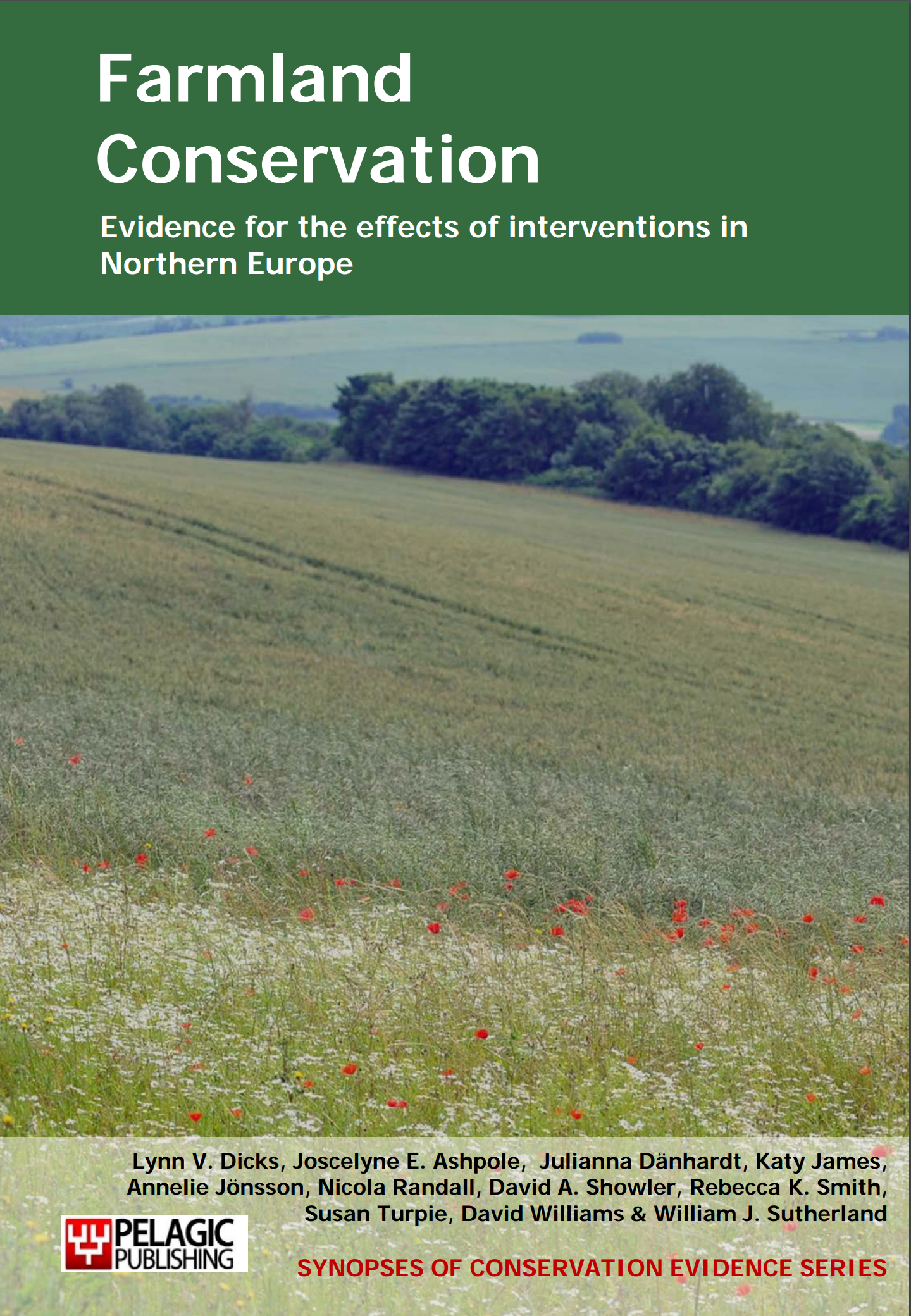Actions to conserve biodiversity
We have summarised evidence from the scientific literature about the effects of actions to conserve wildlife and ecosystems.
Review the evidence from the studies
Not sure what Actions are? Read a brief description.
Search for evidence
e.g. "frogs chytrid"
119 Actions found
Refine
Hide
119 Actions found
Download Actions
| 0 selected |
|
Order results by:
| Action | Effectiveness | Studies | Category | |
|---|---|---|---|---|
|
Re-wet moorland Action Link |
No evidence found (no assessment) | 0 |
|
|
|
Control grey squirrels Action Link |
No evidence found (no assessment) | 0 |
|
|
|
Erect predator-proof fencing around important breeding sites for waders Action Link |
No evidence found (no assessment) | 0 |
|
|
|
Remove coarse fish Action Link |
No evidence found (no assessment) | 0 |
|
|
|
Manage wild deer numbers Action Link |
No evidence found (no assessment) | 0 |
|
|
|
Provide specialist advice, assistance preparing conservation plans Action Link |
No evidence found (no assessment) | 0 |
|
|
|
Manage woodland edges to benefit widlife Action Link |
No evidence found (no assessment) | 0 |
|
|
|
Support or maintain low intensity agricultural systems Action Link |
No evidence found (no assessment) | 0 |
|
|
|
Leave unharvested cereal headlands in arable fields Action Link |
No evidence found (no assessment) | 0 |
|
|
|
Restore or create traditional orchards Action Link |
No evidence found (no assessment) | 0 |
|
|
|
Mark fencing to avoid bird mortality Action Link |
No evidence found (no assessment) | 0 |
|
|
|
Use mixed stocking Action Link |
Evidence not assessed | 1 |
|
|
|
Make selective use of spring herbicides Action Link |
Evidence not assessed | 1 |
|
|
|
Provide medicated grit for grouse Action Link |
Evidence not assessed | 1 |
|
|
|
Provide training for land managers, farmers and farm advisers Action Link |
Evidence not assessed | 1 |
|
|
|
Provide short grass for birds Action Link |
Evidence not assessed | 1 |
|
|
|
Provide other resources for birds (water, sand for bathing) Action Link |
Unknown effectiveness (limited evidence) | 1 |
|
|
|
Plant nettle strips Action Link |
Unknown effectiveness (limited evidence) | 1 |
|
|
|
Control scrub Action Link |
Unknown effectiveness (limited evidence) | 1 |
|
|
|
Take field corners out of management Action Link |
Evidence not assessed | 1 |
|
|
|
Mark bird nests during harvest or mowing Action Link |
Unknown effectiveness (limited evidence) | 1 |
|
|
|
Manage heather by swiping to simulate burning Action Link |
Unknown effectiveness (limited evidence) | 1 |
|
|
|
Manage the agricultural landscape to enhance floral resources Action Link |
Unknown effectiveness (limited evidence) | 1 |
|
|
|
Maintain wood pasture and parkland Action Link |
Unknown effectiveness (limited evidence) | 1 |
|
|
|
Use scaring devices (eg. gas guns) and other deterrents to reduce persecution of native species Action Link |
Evidence not assessed | 1 |
|
Download Actions
| 0 selected |
|

Farmland Conservation - Published 2013
Farmland Synopsis
Watch this search
If you are familiar with RSS feeds, please click the button below to retrieve the feed URL:
RSS feed for this searchIf you are unfamiliar with RSS feeds, we would suggest reading this BBC article.
Unfortunately, due to the number of feeds we have available, we cannot provide e-mail updates. However, you could use tools such as Feed My Inbox to do this for you.
What are 'Individual studies' and 'Actions'?
Individual studies
An individual study is a summary of a specific scientific study, usually taken from a scientific journal, but also from other resources such as reports. It tells you the background context, the action(s) taken and their consequences.
If you want more detail please look at the original reference.
Actions
Each action page focuses on a particular action you could take to benefit wildlife or ecosystems.
It contains brief (150-200 word) descriptions of relevant studies (context, action(s) taken and their consequences) and one or more key messages.
Key messages show the extent and main conclusions of the available evidence. Using links within key messages, you can look at the paragraphs describing each study to get more detail. Each paragraph allows you to assess the quality of the evidence and how relevant it is to your situation.
Where we found no evidence, we have been unable to assess whether or not an intervention is effective or has any harmful impacts.





)_2023.JPG)














